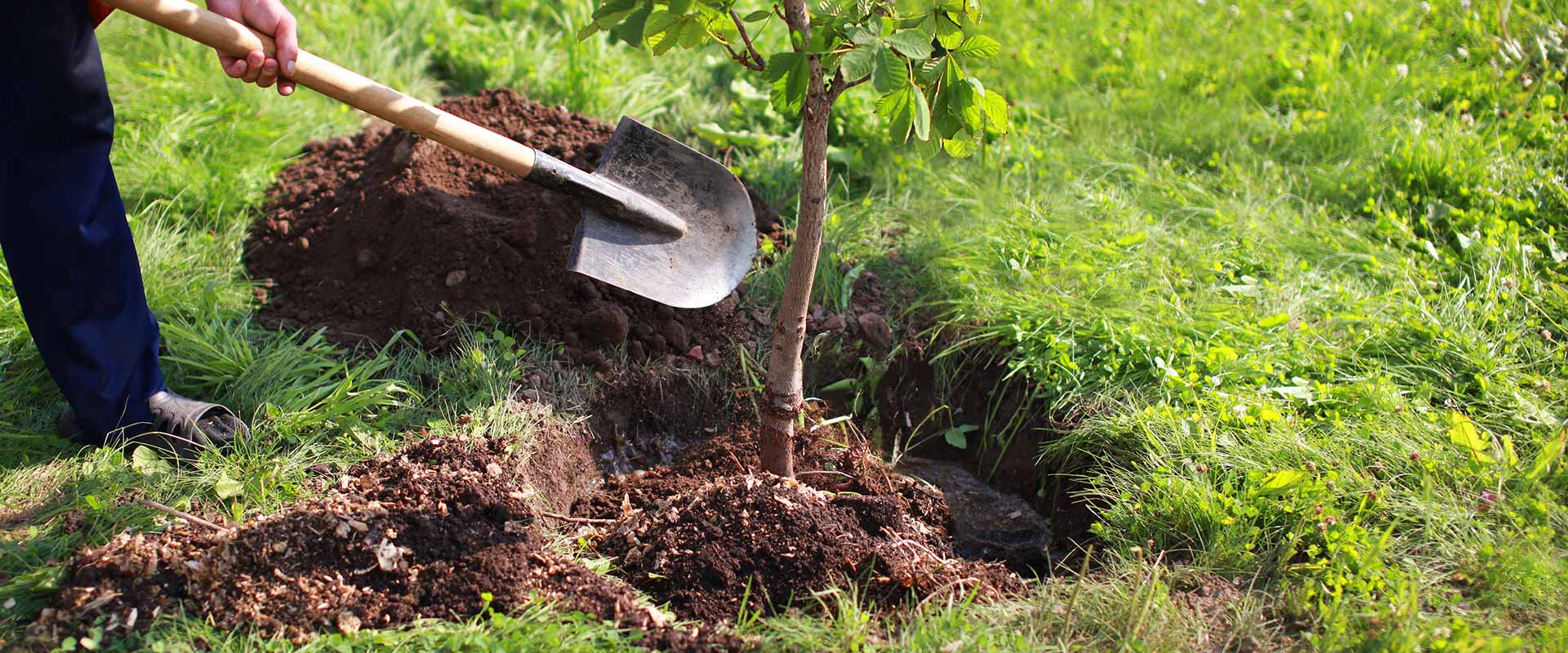Tree planting tips to increase the likelihood that your new tree will thrive in your yard. For advise on selecting the right tree, please read Buying High Quality Trees For Your Seattle Yard post.
Best time to plant trees.
The best time to plant trees is during the dormant season (after leaves fall in autumn or before trees start budding in the spring). Why? The weather is cool, which lets the tree establish root in its new home before spring rains and summer heat fuels new top growth.
We should also note that healthy balled/burlapped and container trees can be planted throughout the year IF you give them the care needed to thrive. Read on for more tree planting tips.
How to minimize transplant shock
Balled and burlap-wrapped trees lose a substantial portion of their root system when dug at the nursery. This results in ‘transplant shock’. A period of time where there is slow growth and reduced vitality due to the stress of the transplanting.
Container trees may also have transplant shock if they have girdled (circled) roots that need to be cut. The good news is that if you follow the site preparation described below, you can prevent further damage and help the tree recover from stress quicker.
9 steps for planting success
IMPORTANT: Before planting, make sure you locate all underground utility lines as you don’t want to damage them when you dig. Also, lift the tree by the root ball (not the trunk) to avoid any damage.
- Remove soil around base of tree to expose trunk flare.
- Dig hole as deep as root ball but 2 to 3 times wider (breaks up soil so roots can easily expand).
- Remove or cut away container & cut, straighten, or remove any circling roots.
- Place tree at proper height (should be easy if you dug hole the same depth as root ball).
- Look at tree from all directions & from a distance to ensure straightness.
- Fill hole gently but firmly by first packing soil around base of root ball to stabilize it, then fill in rest of hole-watering periodically to remove air pockets.
- Staking tree usually only necessary if in windy area or planting bare root stock.
- Mulch around base of tree following tips below.
- Water when soil below mulch is dry (usually once/week) keeping soil moist but not waterlogged.
Plant tree at proper height
Most of a tree’s roots develop in the top 12” of soil. This is why it’s recommended to dig the hole 2-3 times wider than the root ball but not deeper. Plant too deep and new roots have a hard time developing because they lack the necessary oxygen.
If the soil is claylike or doesn’t drain properly, you may want to plant the tree with the trunk flare 2-3” above grade. When placing root ball into hole, make sure the soil under it is firmly packed otherwise the tree may be planted too low once the soil settles.
Staking 101
It’s been found that trees establish more quickly and develop stronger trunk/root systems when they are not staked at planting. If you determine you need to stake your tree because it’s located in a particularly windy area, please follows this advise.
Tie a wide flexible material on the lower half of the trunk using 1 or 2 stakes. It should be tight enough to hold the tree upright yet still allow a little movement. Remember to remove it after one year of growth.
Proper mulching around tree
Mulching around the base of a tree helps soil to retain moisture while moderating soil temperature to reduce the chance of grass and weeds growing. This is important since grass and weeds compete with the tree for nutrients.
Common mulches may be made of leaf litter, pine straw, shredded bark, peat moss or composted wood chips. A 2-4” layer is perfect as going any deeper than 4” may cause issues with oxygen and/or moisture levels.
Do not pile the mulch right up against the trunk because it can cause the bark to decay. Leaving a mulch-free area of 1-2” around the entire base of the trunk reduces bark moisture and prevents decay.
Tree care after planting
It’s best not to fertilize when you plant your new tree. If you damaged any branches during transport or planting, prune only the damaged ones. It’s recommended to NOT do any pruning until after a full season of growth in the new location.
We hope these tree planting tips help and when it’s time to prune your tree, contact Eastside Tree Works. We have many ISA Certified Arborists on staff ready to prune your trees along with any other tree services you may need.

